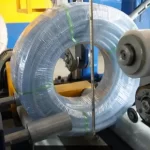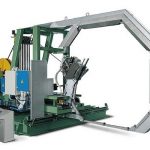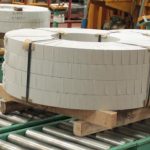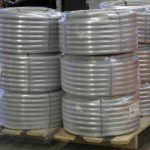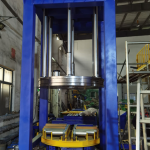How to Conduct a Cost-Benefit Analysis for Steel Coil Strapping Machine Investments
Investing in a steel coil strapping machine can significantly enhance your packaging operations, but it requires a thorough cost-benefit analysis to ensure it's the right decision for your business. This guide will walk you through the essential steps and considerations for conducting a comprehensive analysis that will help you make an informed investment decision.
Understanding Steel Coil Strapping Machines
What Are Steel Coil Strapping Machines?
Steel coil strapping machines are specialized equipment designed to secure steel coils with straps, ensuring their stability during transport and storage. These machines automate the strapping process, providing consistent tension and secure packaging.
Importance in Manufacturing
In manufacturing, particularly in industries dealing with heavy materials like steel, ensuring the secure transportation of products is crucial. Strapping machines enhance efficiency, reduce manual labor, and improve safety, making them a valuable addition to any production line.
The Basics of Cost-Benefit Analysis
What Is Cost-Benefit Analysis?
Cost-benefit analysis (CBA) is a systematic approach to evaluating the economic pros and cons of a potential investment. It involves comparing the costs of an action to the benefits it will deliver, helping businesses make informed financial decisions.
Why Conduct a CBA for Strapping Machines?
Conducting a CBA for a strapping machine helps you understand whether the investment will yield positive returns. It allows you to quantify benefits such as increased productivity, reduced labor costs, and improved safety against the initial and ongoing expenses.
Identifying Costs
Initial Investment
The initial cost of purchasing a steel coil strapping machine includes the price of the equipment, installation fees, and any necessary modifications to your facility.
Operational Costs
Operational costs cover maintenance, energy consumption, and any additional staffing required to operate and maintain the machine.
Training and Implementation
Training employees to use the new system is essential and incurs costs. Additionally, implementation may cause temporary disruptions in production.
Potential Hidden Costs
Consider potential hidden costs such as unexpected repairs, downtime during setup, or adjustments needed after installation.
Estimating the Benefits
Increased Efficiency
Automated strapping machines significantly increase the speed of operations, allowing more products to be ready for shipment in less time.
Labor Savings
By automating the strapping process, you reduce the need for manual labor, which can lead to substantial savings in wages and benefits.
Improved Safety
Automation decreases the risk of workplace injuries related to manual strapping, reducing potential liability and associated costs.
Enhanced Product Quality
Consistent and precise strapping ensures that products are securely packaged, reducing the likelihood of damage during transport and enhancing customer satisfaction.
Calculating Return on Investment (ROI)
Understanding ROI
ROI measures the profitability of an investment. It is calculated by dividing the net profit from the investment by the initial cost and expressing it as a percentage.
How to Calculate ROI for Strapping Machines
- Determine Total Costs: Sum all initial and ongoing expenses.
- Estimate Total Benefits: Quantify all monetary benefits gained from the machine.
- Calculate Net Profit: Subtract total costs from total benefits.
- Compute ROI: Divide net profit by total costs and multiply by 100 to get a percentage.
Factors Influencing the Analysis
Market Conditions
Current market conditions, such as steel prices and demand fluctuations, can impact the cost-effectiveness of your investment.
Technological Advancements
Stay informed about technological advancements in strapping machines. Newer models might offer better efficiency or additional features that could influence your decision.
Supplier Reputation and Support
Choosing a reputable supplier with excellent customer support can affect the overall success of your investment. Reliable service and maintenance are crucial for minimizing downtime.
Industry-Specific Considerations
Construction and Manufacturing Sectors
In construction and manufacturing, the volume of materials handled makes efficiency and reliability of strapping machines particularly important.
Logistics and Transportation
For logistics and transportation companies, the focus is on securing loads effectively to prevent damage during transit, making the choice of strapping machine critical.
Environmental and Sustainability Factors
Energy Efficiency
Investing in energy-efficient machines reduces operational costs and aligns with sustainability goals, enhancing your company’s reputation.
Sustainable Materials
Using machines that support recyclable strapping materials helps reduce environmental impact and meets growing consumer demand for sustainable practices.
Real-World Case Studies
Successful Implementations
Analyzing case studies of companies that have successfully implemented steel coil strapping machines can provide insights into best practices and potential pitfalls to avoid.
Lessons Learned
Understanding the challenges faced by others and how they were overcome can guide your strategy and improve your likelihood of a successful investment.
Making the Final Decision
Weighing Costs Against Benefits
After conducting a thorough CBA, weigh the total costs against the anticipated benefits. Ensure the investment aligns with your strategic goals and offers a reasonable ROI.
Consider Long-Term Impacts
Think beyond immediate gains and consider how the investment will impact your company’s operations in the long run. Will it allow for expansion or adaptation to future market changes?
Conclusion
Conducting a detailed cost-benefit analysis for steel coil strapping machine investments is crucial for making informed business decisions. By carefully evaluating costs and benefits, understanding industry-specific needs, and considering environmental factors, you can ensure that your investment aligns with your business goals and delivers the desired returns. Making the right choice not only enhances operational efficiency but also positions your company for future success.



